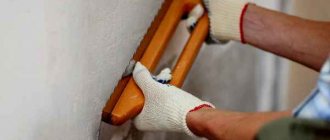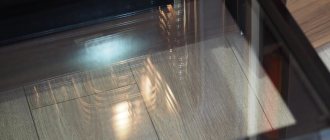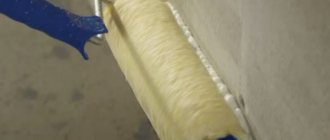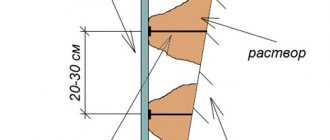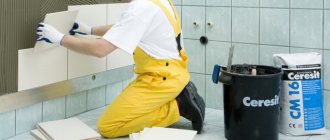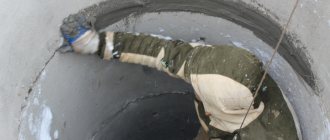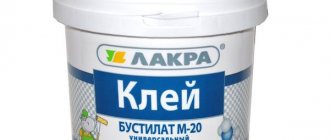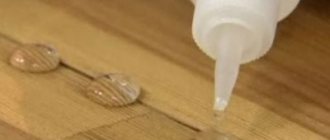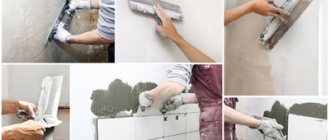Sometimes everyone is faced with the need to glue glass or various objects made from this material. In such situations, it becomes necessary to look for a special transparent glue for glass, which guarantees the fastest and, at the same time, effective gluing of products.
- Required properties of glass adhesive
- Adhesive for glass products: types
- Polyurethane based
- Cyanoacrylate
- PVA
- Heat resistant
- Optic
- Polymer based
- Silicone
- Conditions for using adhesives
- Gluing glass to glass: instructions
- How to glue glass to metal?
- Bonding glass to wood
- Useful tips
In fact, inconspicuousness and transparency in most cases are the main criteria by which buyers purchase glass glue. It is important to select a composition that has a high degree of adhesion and bond strength.
This article is devoted to the issues of choosing a transparent composition for connecting glass surfaces. The publication addresses the following questions:
- Selecting transparent glass adhesive. Types and principles of using adhesive compositions.
- Properties of PVA, polyurethane, heat-resistant, optical, cyanoacrylate, polymer mixtures.
- Instructions on how to glue glass to metal, wood and other glass products. Valuable recommendations for performing correct gluing.
Required properties of glass adhesive
Before gluing glass, it is important to purchase a high-quality composition. Let's figure out what technical characteristics a special product should have for this purpose.
So, the main requirements for the properties of this material are:
- improved adhesion to different types of coatings;
- transparency and invisibility of the glue on the treated surface;
- fast setting;
- viscosity, some ductility, elasticity;
- resistance to temperature changes, as well as to conditions of high humidity;
- safety for human use;
- Possibility of storing the product with the condition of further use after the first opening.
Interestingly, not every type of adhesive combines such characteristics. For example, too cheap glass glue often does not have the listed features. For this reason, craftsmen recommend paying attention to more expensive products. After all, they are, as a rule, of higher quality and meet consumer expectations.
Types of glass glue
Glass adhesive is made from different components. Therefore, several types of compositions are distinguished.
Cyanoacrylate
The use of cyanoacrylate type ensures reliable fixation. The glued planes can be easily subjected to loads and vibrations. This composition has its positive aspects:
- Fast setting.
- Long service life of the glued seam.
- Can be applied to glass surfaces with pre-painting.
Work using this type is carried out quickly and efficiently. An example is the connection of elements in optics, microcircuits, wiring harnesses, etc.
The disadvantage is that the work must be carried out quickly, with maximum accuracy. There is practically no time to correct inaccuracies or defects. Also, the glue does not withstand constant contact with water.
An example of such a composition is Kleber CA cyanoacrylate adhesive. Designed for a wide range of materials. Treated with a professional quick-hardening compound. Dries in 5 seconds. Forms a colorless, heat-resistant seam.
Adhesive for glass products: types
Clear glass adhesive is not uncommon. The consumer market offers a wide range of adhesive materials for various needs. It’s easy to get confused in such a comprehensive range if you don’t understand their features and scope of application at all.
As you can see, in order to glue glass, it is important to navigate the adhesive materials specially designed for this. In order to help make the right choice of transparent glass adhesive, the article below presents its most popular types with detailed characteristics.
Polyurethane based
One of the optimal adhesive materials that helps glue glass together is a polyurethane mixture. Suitable for working with smooth surfaces. This fact explains the popularity of the product for interacting with glass surfaces.
Conventionally, these goods can be divided into two main categories:
- Single-component. They attract attention because they are immediately ready for use. After all, the mixture eliminates the addition of additional components.
- Two-component. They are characterized by increased flexibility regarding the time of complete polymerization. The exact period depends on the amount of hardener in the product. The main advantage of the product is its ability to be restored.
A polyurethane adhesive mixture is combined from resins and active substances that provide viscosity, are responsible for consistency and for the speed of complete drying. Composite additives are used to strengthen the seam.
Cyanoacrylate
Glass gluing can also be done using cyanoacrylate type glue. Positioned by manufacturers as a universal remedy. In addition, these types of glue can be used in the production of electrical appliances. There is both a transparent mixture and a composition with a yellowish tint.
The main advantages are:
- rational cost;
- liquefied consistency;
- fast setting;
- increased seam strength.
Manufacturers of cyanoacrylate glue made sure that the use of the product was as comfortable as possible for the consumer. So, it comes in tubes made of plastic or aluminum. In this case, the product does not have to be used at once. Just close the tube tightly. Then it is guaranteed to last a long time without any changes until further use.
In addition, cyacrine compositions are also found in gel format. At room temperature, the mixture begins to harden in literally three seconds. You should only handle this adhesive mixture with gloves, because getting it on your hands can cause serious skin burns. Before purchasing transparent glue, read the instructions, because this adhesive is compatible with certain types of plastic.
PVA
Glass can also be glued using PVA. Polyvinyl acetate-based glue is found in any home and is often used in everyday life. Naturally, the effectiveness of gluing glass is questionable, because PVA does not have a high enough degree of adhesion.
Another disadvantage is that some of these products can leave marks on the seams when gluing. The main advantage of PVA when gluing glass is, of course, its availability. This composition can be easily found in almost all stores, and at a low price.
Heat resistant
Heat-resistant transparent glass adhesive is intended for gluing those objects and surfaces that will subsequently be exposed to elevated temperatures.
For example, heat-resistant adhesive can be used for bonding:
- Ovens, electric kettles. When restoring kitchen stoves.
- For other equipment with glass inserts.
The advantage of the adhesive is that the created adhesive seam will not melt when exposed to elevated temperatures. This effect was achieved thanks to the addition of special amplifiers as components of the product.
Optic
The main purpose of this glue is gluing optical devices. In particular, it is used by manufacturers of photographic equipment and other devices that require full transmission of ultraviolet rays.
This transparent adhesive is extremely rarely used in domestic conditions. Most often it is used by professionals, which means finding a product on free sale is a difficult task. And, naturally, the disadvantage of such products is their rather high cost, which is explained by the high cost of the components of the composition.
Polymer based
It fully sets and dries primarily due to exposure to ultraviolet rays. Allows you to firmly glue glass fragments. This clear adhesive must be used wisely and only on certain surfaces. At least one of the glasses must be transparent to provide light access.
In order for the surfaces to be glued to fully adhere to each other, they must be placed under a specially designed lamp, which will ensure complete hardening. Among the advantages of this type of glue are:
- complete transparency of seams;
- tolerance of high air temperatures, high humidity;
- as well as excellent tolerance to mechanical loads.
All users cite the relatively long drying time of the material as an absolute disadvantage.
Silicone
In addition, glass can be glued using a composition such as silicone glass adhesive. It is a special transparent mixture of high molecular weight polymers with the addition of several components. Thanks to them, such adhesives are characterized by resistance to a variety of bacteriological environments.
Silicone is an environmentally friendly material, so it can even be used in the food industry. The exact drying time depends on the complete list of components of the product, humidity and air temperature in the room where the work is being carried out.
We combine glass and metal
In some cases, it is necessary to glue metal to the glass. It will not be possible to use Moment glue or PVA, because... these compounds do not provide the required strength and durability. For such work, specialized adhesives that provide a seam of the required quality are better suited.
Two-component adhesive
The adhesive mass obtained by combining epoxy resin and hardener is a polymer material with high adhesion to various surfaces. The two-component epoxy composition is waterproof, increased strength and lacks electrical conductivity.
Standard packaging consists of 2 components, which, when mixed, form an elastic adhesive substance. The process is irreversible, which guarantees the formation of a durable and strong connection between the parts. The glue is transparent, thick in consistency, and can be used even under water. But the heat resistance of epoxy materials is low.
High temperature silicone
If a glass product is used in conditions with increased thermal stress, then a one-component silicone sealant is more suitable for its reliable bonding, which retains elasticity for a long time at various temperatures (within -60...+300 °C) and does not change its structure under the influence of aggressive chemicals environments and substances. Glue sealant for repairing an aquarium will also be the most suitable option, because it creates a sealing gasket.
Gluing rules
Glass-to-metal glue is used a little differently than for joining glass. To begin with, both surfaces are freed from paint residues, washed well, dried and degreased. The glass part must be heated to approximately +50...+60 °C, being careful, because heated glass becomes brittle and cracks easily. Then apply a thin uniform layer of this composition to both parts to be joined, wait 2-3 minutes for the glue to set and press them tightly together. You can use the product after 24 hours.
Conditions for using adhesives
Are you wondering how to glue glass? When working with glass glue, a number of requirements and specific rules must be observed. So, you need to act with extreme caution, because the transparent material may become stained due to improper use of the adhesive mixture.
Remember that the glass surface is quite fragile, so you cannot apply excessive mechanical pressure to it. When drops of glue accidentally fall on the front surface of the glass, wash off its remains using special solvents. If you are going to interact with an aggressive adhesive, then take care to protect your hands.
Gluing glass to glass: instructions
First, prepare the necessary parts, clear glass glue and put on gloves. Next, proceed to the actual work:
- We clean the coatings of the parts to be glued and wait until they dry.
- Apply transparent glue to one of the parts that need to be joined.
- Immediately we press them to each other. There is no need to wait some time before compressing, because setting occurs relatively quickly.
- We wait until the adhesive layer dries.
In fact, the main thing in such a process is maximum caution when working with sharp corners of glass. You also need to focus on the instructions from the manufacturers, who may note some important nuances of correct work with the produced compounds.
How to glue glass to metal?
Don't know how to glue glass to metal? Everything is also simple here if you manage to choose the right transparent glue for glass and metal. So, you will need to purchase UV glue or another product with a gel consistency. This is necessary so that the seam remains in the right place and does not spread over the surface being treated.
Both glass and metal surfaces need to be degreased. In addition, in order to glue glass and metal, they should be heated to forty degrees. This same process will help dry the parts and also remove any remaining adhesive from the previous one.
We place the seam horizontally, and apply transparent glass glue to the part. We press using suction cups or a magnet for high-quality polymerization. We wait until the adhesive has completely cured according to the time specified in the instructions for the product.
Bonding glass to wood
Now let's look at the question of how to glue glass to wood. According to the algorithm of actions, you can safely focus on the principles of bonding glass to metal.
First of all, you need to clean the coating and sand the wood material. This will ensure a more even seam, and, accordingly, better quality when gluing the wood onto the glass. It is recommended to choose a paste or gel based adhesive.
Requirements for glass adhesive
Glass is a material with reduced adhesion, which makes it difficult to glue. Glass is also quite fragile, which also complicates the task. What properties should the glue have to make working with glass convenient and the result reliable and durable? Basic requirements for the material:
- High adhesion is a prerequisite, since glass is smooth and repels water; special adhesion strength is needed for gluing household items that are subject to stress.
- The glue should be transparent so that the seam remains invisible. For fastening small parts, this property is more important than strength.
- When working, the glue should dry quickly.
- High-quality material has a thick consistency.
- The seam must be elastic.
- Important characteristics are heat and cold resistance; it is highly desirable that the glue can withstand high and low temperatures, as well as their differences.
- Waterproof if the surface or object will be located outdoors or in a damp room.
- Safe for the environment, free of toxic substances and odor after curing, and ideally during operation.
Transparent glass adhesive is the best option for working with colorless materials of various types. This property is important for neatly joining small and decorative parts. When choosing an adhesive, you need to pay attention to the properties of the surfaces to be bonded. So, for smooth ones, regular compounds are suitable, for corrugated ones, reinforced ones. If you need to glue special glass, for example, for an aquarium, then buy a sealant without antibacterial additives, that is, safe for the water and its inhabitants. The strength of the adhesive is especially important when working with window glass or painted surfaces.
Useful tips
Despite the fact that glass gluing seems complicated, it can be done quite quickly and without difficulty. To do this, just follow the instructions from the manufacturer and take care of your own safety.
It is recommended to purchase products for gluing glass exclusively in specialized stores in Moscow, which can provide the correct storage conditions for the goods. Expired transparent glass adhesive should not be used. The properties of compounds with an expired shelf life are lost.
To clearly understand the features of transparent glass adhesive, we recommend watching the thematic video:
